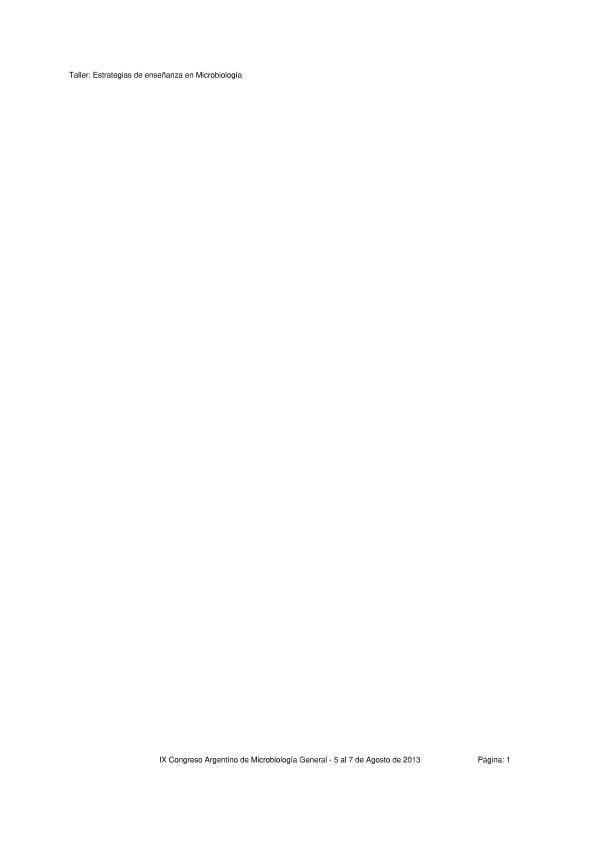Mostrar el registro sencillo del ítem
dc.contributor.author
Castillo, Natalia Alejandra

dc.contributor.author
Montes de Oca, Cecilia Estefania

dc.contributor.author
Valdez, Alejandra Leonor

dc.contributor.author
Fariña, Julia Ines

dc.date.available
2023-04-25T14:09:02Z
dc.date.issued
2013
dc.identifier.citation
Adapted and optimized colorimetric method for the rapid on-line quantification of scleroglucan during a submerged fermentation process; IX Congreso Argentino de Microbiología General; Santa Fe; Argentina; 2013; 1-2
dc.identifier.uri
http://hdl.handle.net/11336/195238
dc.description.abstract
Scleroglucan is an extracellular neutral b-1,3-b-1,6-glucan frequently produced by Sclerotium fungal species during submerged fermentation processes. Due to its physicochemical, rheological and biological properties, scleroglucan became particularly attractive for diverse food, agro industrial, biomedical and oil recovery applications. Currently, the most widely used technique for polymer quantification consists in its purification from culture broths and dry weightdetermination. This method has the inconvenience of being poorly sensitive at low concentrations and time-consuming, therefore, being not suitable for real-time monitoring. Recently, Jörg Nitschke et al. (Food Chemistry, 2011. 127: 791?796) developed a colorimetric Congo red-based method to quantify b-1,3-glucans in mycelia and fruiting bodies from edible mushrooms. Congo red would incorporate into the b-1,3-b-1,6-glucans triple helix thus leading to a bathochromic shift that can be used for colorimetric quantification. Based on this previous report, this work is aimed at adapting and optimizing this novel technique in order to on-line quantify scleroglucan production during submerged fermentation. For this purpose, several dye (0.6-1 g/L Congo red) and NaOH (80-200 μL of NaOH 1 or 1.2 N) concentrations were tested to achieve the greater bathochromic shift when using commercial scleroglucan (LSCL) as standard. Reproducibility of bathochromic shift was also evaluated with lab-scale produced scleroglucans. A scleroglucan calibration curve (0.1-0.9 g/L) could be satisfactorily constructed. Linearity, sensitivity and specificity within this working range were assessed at different wavelengths and time points (0, 30 min, 1, 3, 5, 8 and 24 h post reaction). Finally, to validate the methodology, a fermentation process with Sclerotium rolfsii ATCC 201126 was performed, and scleroglucan quantification was simultaneously accomplished by conventional (dry weight) and Congo red methods. Selected conditions allowed the reliable and sensitive scleroglucan Congo red quantification during fermentation. Both commercial and lab-scale produced scleroglucans could be successfully used for the standard curve preparation. This novel methodology proved to be highly effective and sensitive for the on-line quantification throughout scleroglucan production, and the obtained results were comparable to those from the conventional technique (dry weight). The method optimized for scleroglucan measurement showed to be inexpensive, practical, reliable, specific and time-effective, being also potentially useful for other triple-helical b-glucans. Additionally, on-line monitoring of scleroglucan production represents a critical tool for taking real-time appropriate decisions during fermentation process, particularly when working at large scale
dc.format
application/pdf
dc.language.iso
eng
dc.publisher
Sociedad Argentina de Microbiología
dc.rights
info:eu-repo/semantics/openAccess
dc.rights.uri
https://creativecommons.org/licenses/by-nc-sa/2.5/ar/
dc.subject
scleroglucan
dc.subject
on line quantification
dc.subject
congo red
dc.subject
fermentation process
dc.subject.classification
Bioprocesamiento Tecnológico, Biocatálisis, Fermentación

dc.subject.classification
Biotecnología Industrial

dc.subject.classification
INGENIERÍAS Y TECNOLOGÍAS

dc.title
Adapted and optimized colorimetric method for the rapid on-line quantification of scleroglucan during a submerged fermentation process
dc.type
info:eu-repo/semantics/publishedVersion
dc.type
info:eu-repo/semantics/conferenceObject
dc.type
info:ar-repo/semantics/documento de conferencia
dc.date.updated
2023-03-15T20:39:57Z
dc.journal.pagination
1-2
dc.journal.pais
Argentina

dc.journal.ciudad
Ciudad Autónoma de Buenos Aires
dc.description.fil
Fil: Castillo, Natalia Alejandra. Consejo Nacional de Investigaciones Científicas y Técnicas. Centro Científico Tecnológico Conicet - Tucumán. Planta Piloto de Procesos Industriales Microbiológicos; Argentina
dc.description.fil
Fil: Montes de Oca, Cecilia Estefania. Consejo Nacional de Investigaciones Científicas y Técnicas. Centro Científico Tecnológico Conicet - Tucumán. Planta Piloto de Procesos Industriales Microbiológicos; Argentina
dc.description.fil
Fil: Valdez, Alejandra Leonor. Consejo Nacional de Investigaciones Científicas y Técnicas. Centro Científico Tecnológico Conicet - Tucumán. Planta Piloto de Procesos Industriales Microbiológicos; Argentina
dc.description.fil
Fil: Fariña, Julia Ines. Consejo Nacional de Investigaciones Científicas y Técnicas. Centro Científico Tecnológico Conicet - Tucumán. Planta Piloto de Procesos Industriales Microbiológicos; Argentina
dc.relation.alternativeid
info:eu-repo/semantics/altIdentifier/url/https://samige.org.ar/wp-content/uploads/2022/10/Libro-samige-2013.pdf
dc.conicet.rol
Autor

dc.conicet.rol
Autor

dc.conicet.rol
Autor

dc.conicet.rol
Autor

dc.coverage
Nacional
dc.type.subtype
Congreso
dc.description.nombreEvento
IX Congreso Argentino de Microbiología General
dc.date.evento
2013-08-05
dc.description.ciudadEvento
Santa Fe
dc.description.paisEvento
Argentina

dc.type.publicacion
Book
dc.description.institucionOrganizadora
Sociedad Argentina de Microbiología General
dc.source.libro
Libro de resumenes del IX Congreso Argentino de Microbiología Genera
dc.date.eventoHasta
2013-08-07
dc.type
Congreso
Archivos asociados
